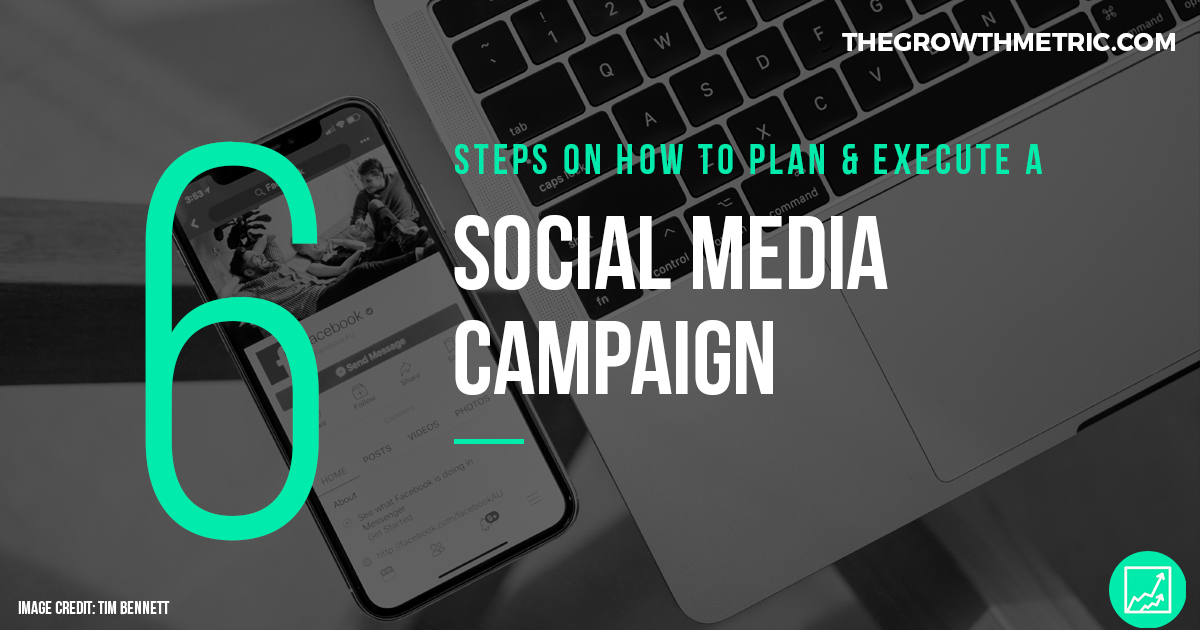Decoding the Power of Social Media Campaigns: Unveiling Their Purpose
Social media has revolutionized the way businesses connect with their target audience and promote their brand. One of the most effective ways to leverage the power of social media is through a well-executed social media campaign. But what exactly is the purpose of a social media campaign?
In this article, we will delve into the purpose of a social media campaign and explore its significance in today’s digital landscape. A social media campaign serves as a strategic initiative designed to achieve specific marketing objectives through targeted and coordinated efforts across various social media platforms.
Understanding Social Media Campaigns
Social media has become an essential component of marketing strategies for businesses across industries. To maximize their reach and engage with their target audience effectively, businesses employ social media campaigns. In this section, we will explore the key aspects of understanding social media campaigns, including their definition, importance, successful examples, and the various platforms used for campaigns.
What is a Social Media Campaign?

A social media campaign refers to a coordinated and strategic marketing effort aimed at achieving specific business goals using one or more social media platforms. Unlike everyday social media activities, campaigns have a heightened focus on targeting, measurability, and specific objectives. These campaigns are designed to leverage the power of social media platforms to enhance brand visibility, engage with the audience, and drive desired actions.
Importance of Social Media Campaigns in Today’s Digital Landscape
Social media campaigns have gained tremendous importance in the current digital landscape due to their numerous benefits for businesses. Some key reasons why social media campaigns are crucial include:
- Expanded Reach and Targeting: Social media platforms provide businesses with access to a vast and diverse audience base. Campaigns enable businesses to target specific demographics, interests, and behaviors, ensuring their message reaches the right people.
- Enhanced Brand Awareness: Social media campaigns play a pivotal role in increasing brand visibility and awareness. By consistently delivering compelling content and leveraging various engagement strategies, businesses can generate buzz around their brand and capture the attention of their target audience.
- Increased Audience Engagement: Social media campaigns provide businesses with an opportunity to foster meaningful interactions and engagement with their audience. By encouraging users to like, comment, share, and participate in various activities, businesses can build a loyal community around their brand.
- Improved Customer Insights: Social media campaigns allow businesses to gather valuable insights about their audience’s preferences, behaviors, and sentiments. By analyzing campaign data and feedback, businesses can refine their strategies, better understand their customers, and make informed business decisions.
- Driving Conversions and Sales: Effective social media campaigns have the potential to drive conversions and boost sales. By strategically promoting products or services, providing exclusive offers, and implementing persuasive call-to-action strategies, businesses can influence their audience’s purchasing decisions.
Examples of Successful Social Media Campaigns
There have been several notable social media campaigns that have achieved remarkable success. Here are a few examples:
- ALS Ice Bucket Challenge: This campaign went viral on social media, raising awareness and funds for Amyotrophic Lateral Sclerosis (ALS). Participants were challenged to pour a bucket of ice-cold water over their heads and nominate others to do the same, while also encouraging donations to the ALS Association.
- #ShareACoke: Coca-Cola’s campaign involved personalizing its product labels with popular names, encouraging customers to find and share Coke bottles with their names or the names of their loved ones. The campaign sparked a social media frenzy, with people sharing photos and stories of their personalized Coke bottles.
- #LikeAGirl: Always, a feminine hygiene brand, launched this campaign to challenge stereotypes and empower young girls. Through thought-provoking videos and social media engagement, the campaign aimed to redefine what it means to do something “like a girl” and garnered widespread attention and support.
Overview of Various Social Media Platforms Used for Campaigns
Social media campaigns can be executed on a variety of platforms, each offering unique features and demographics. Some popular social media platforms used for campaigns include:
- Facebook: With billions of users, Facebook provides an extensive reach and robust targeting capabilities. Its advertising tools, such as Facebook Ads Manager, allow businesses to create and manage campaigns effectively.
- Instagram: Known for its visual appeal, Instagram is a popular platform for image and video-centric campaigns. It offers features like Stories, IGTV, and influencer partnerships, enabling businesses to connect with their audience in creative ways.
- Twitter: Twitter is a real-time platform that allows businesses to engage in conversations, share updates, and run targeted campaigns. Hashtags and trending topics make it easy for businesses to join relevant conversations and amplify their message.
- LinkedIn: Primarily a professional networking platform, LinkedIn is suitable for B2B campaigns and targeting professionals. It offers various advertising options, such as sponsored content and InMail, to help businesses reach their desired audience.
- YouTube: Known as the world’s second-largest search engine, YouTube offers vast opportunities for video-based campaigns. Businesses can create engaging video content, collaborate with influencers, and run targeted ads on the platform.
Understanding the strengths and demographics of each platform is essential for businesses to select the most appropriate channels for their social media campaigns.
In conclusion, social media campaigns are instrumental in achieving business goals in the digital landscape. They help businesses expand their reach, increase brand awareness, engage with the audience, and drive conversions. By leveraging the power of various social media platforms and learning from successful campaigns, businesses can create impactful strategies that resonate with their target audience and yield measurable results.
Objectives and Goals of Social Media Campaigns

Social media campaigns serve as powerful marketing tools for businesses to achieve specific objectives and goals. In this section, we will explore the key aspects of setting objectives and goals for a social media campaign, along with the benefits they can bring to businesses. We will also delve into various objectives and goals commonly associated with social media campaigns, including increasing brand awareness and visibility, driving website traffic and lead generation, enhancing customer engagement and loyalty, boosting sales and revenue, and supporting product launches or promotions.
How to Set Objectives and Goals for a Social Media Campaign
Setting clear and measurable objectives and goals is crucial for the success of a social media campaign. Here are some essential steps to consider:
- Define Your Business Goals: Before planning a social media campaign, it’s important to align it with your overall business goals. Determine what you want to achieve through the campaign, such as increasing sales, expanding brand reach, or launching a new product.
- Identify Key Performance Indicators (KPIs): Select the metrics that will help you measure the success of your campaign. Examples of KPIs include website traffic, engagement rate, lead conversions, sales revenue, or social media followers.
- Establish Specific and Measurable Objectives: Create specific and measurable objectives that align with your business goals and KPIs. For instance, increasing website traffic by 20% within a specific timeframe or generating 500 new leads through social media.
- Set a Realistic Timeline: Determine the start and end dates of your campaign, ensuring you have enough time to achieve your objectives. A well-defined timeline allows for effective planning, execution, and monitoring.
- Conduct Research: Perform market research and competitor analysis to gain insights into your target audience, their preferences, and the strategies employed by your competitors. This information will help you tailor your campaign to resonate with your target audience.
- Allocate Resources: Assess the resources required for your campaign, including budget, team members, tools, and content creation. Ensure you have the necessary resources in place to execute the campaign effectively.
Objectives and Goals of Social Media Campaigns
1. Increases Brand Awareness and Visibility
One of the primary objectives of a social media campaign is to increase brand awareness and visibility. By leveraging social media platforms, businesses can reach a wider audience and strengthen their brand presence. Here are some strategies to achieve this goal:
- Create compelling and shareable content that aligns with your brand’s values and resonates with your target audience.
- Utilize visual elements, such as images and videos, to make your brand more memorable and appealing.
- Collaborate with influencers or industry experts to expand your reach and tap into your followers’ networks.
- Utilize hashtags and participate in trending topics to increase your brand’s visibility and join relevant conversations.
2. Drives Website Traffic and Lead Generation
Social media campaigns can be highly effective in driving website traffic and generating leads. Here’s how you can accomplish this goal:
- Include compelling call-to-action (CTA) buttons or links in your campaign content to encourage users to visit your website.
- Create dedicated landing pages optimized for conversions and lead capture.
- Offer valuable incentives, such as exclusive content, discounts, or free resources, in exchange for users’ contact information.
- Run targeted advertisements to reach a specific audience segment and drive traffic to your website.
3. Enhances Customer Engagement and Loyalty
Social media campaigns provide an excellent opportunity to engage with your audience and build customer loyalty. Consider the following strategies:
- Encourage user-generated content (UGC) by running contests or campaigns that invite users to share their experiences with your brand.
- Respond promptly to comments, messages, and inquiries to foster meaningful interactions with your audience.
- Personalize your communication by addressing users by their names and showing genuine interest in their opinions and feedback.
- Share behind-the-scenes content, stories, and sneak peeks to create a sense of exclusivity and strengthen the bond with your audience.
4. Boosts Sales and Revenue
Social media campaigns can directly contribute to boosting sales and revenue. Implement these tactics to drive conversions:
- Offer limited-time promotions, discounts, or exclusive deals exclusively through your social media channels.
- Leverage social proof by showcasing positive reviews, testimonials, or case studies to instill confidence in potential customers.
- Utilize retargeting ads to reach users who have shown interest in your products or services, nudging them toward making a purchase.
5. Supports Product Launches or Promotions
Social media campaigns can be instrumental in launching new products or promoting existing ones. Consider the following strategies:
- Tease your audience with sneak peeks or countdowns to build anticipation for the upcoming product or promotion.
- Create engaging and informative content highlighting the unique features and benefits of the product.
- Utilize influencer partnerships or collaborations to amplify the reach and impact of your product launch or promotion.
- Implement targeted advertising to reach users who are most likely to be interested in your new product or promotion.
By setting clear objectives and goals, businesses can leverage social media campaigns to achieve a range of outcomes, from brand awareness and customer engagement to increased sales and successful product launches. It’s important to tailor your strategies and tactics based on your specific objectives, target audience, and available resources. Regular monitoring and analysis of campaign performance will allow for necessary adjustments and improvements along the way.
How to Plan and Execute a Social Media Campaign

Planning and executing a social media campaign requires careful consideration and strategic decisions. In this section, we will explore the key steps involved in planning and executing a successful social media campaign. We will cover defining the target audience and creating buyer personas, crafting compelling content and visuals, choosing the right social media platforms and channels, setting a budget and allocating resources, establishing a content calendar and scheduling posts, and monitoring and measuring campaign performance.
Step 1: Defining the Target Audience and Creating Buyer Personas
To ensure the effectiveness of your social media campaign, it is essential to define your target audience and create buyer personas. Consider the following steps:
- Conduct Market Research: Gain insights into your target audience’s demographics, interests, behaviors, and preferences. Use surveys, interviews, and analytics tools to gather data and identify key characteristics.
- Segmentation: Divide your audience into distinct segments based on shared characteristics. This allows you to tailor your campaign messages and content to specific groups.
- Create Buyer Personas: Develop detailed profiles that represent your ideal customers. Include demographic information, motivations, challenges, goals, and preferred social media platforms. This helps you understand your audience better and shape your campaign accordingly.
Step 2: Crafting Compelling Content and Visuals
Compelling content and visuals are essential to grab and maintain your audience’s attention. Consider the following strategies:
- Create a Content Strategy: Define the key messages and themes for your campaign. Plan the types of content you will create, such as blog posts, videos, infographics, or user-generated content.
- Tell Stories: Use storytelling techniques to engage your audience emotionally and make your content more memorable.
- Visual Appeal: Incorporate eye-catching visuals, such as high-quality images, videos, and graphics, to enhance the impact of your content.
- Consistency: Maintain a consistent brand voice and visual style across your campaign to reinforce your brand identity and make your content easily recognizable.
Step 3: Choosing the Right Social Media Platforms and Channels
Selecting the appropriate social media platforms and channels for your campaign is crucial for reaching your target audience effectively. Consider the following factors:
- Audience Preferences: Identify the social media platforms that your target audience actively uses and prefers. This ensures that your campaign reaches the right people.
- Platform Features: Understand the unique features and capabilities of different platforms. Consider factors like reach, engagement opportunities, ad targeting options, and content formats to align with your campaign objectives.
- Channel Integration: While focusing on specific platforms, ensure that you promote your campaign across multiple social media channels to maximize its reach and impact.
Step 4: Setting a Budget and Allocating Resources
Determining a budget and allocating resources appropriately is crucial for the success of your social media campaign. Consider the following steps:
- Define Your Budget: Set a realistic budget based on your overall marketing goals and the scale of your campaign. Consider expenses like content creation, ad spending, tools, and personnel.
- Resource Allocation: Allocate resources to different aspects of your campaign, such as content creation, design, advertising, and community management. Ensure you have the necessary expertise and manpower to execute the campaign effectively.
- Invest in Tools: Explore social media management and analytics tools that can help streamline your campaign and provide valuable insights into performance and audience engagement.
Step 5: Establishing a Content Calendar and Scheduling Posts
To ensure consistency and efficiency, establish a content calendar and schedule your social media posts. Consider the following steps:
- Content Calendar: Create a calendar to plan and organize your content in advance. Include key dates, themes, content formats, and publication schedules.
- Content Mix: Determine the right balance of promotional, educational, entertaining, and engaging content to maintain your audience’s interest and avoid being overly sales-focused.
- Scheduling Tools: Utilize social media management tools like Hootsuite, Buffer, or Sprout Social to schedule and automate your posts across different platforms. This allows you to maintain a consistent posting schedule and save time.
Step 6: Monitoring and Measuring Campaign Performance
Monitoring and measuring campaign performance is crucial to evaluate its effectiveness and make necessary adjustments. Consider the following strategies:
- Key Metrics: Define key performance indicators (KPIs) aligned with your campaign objectives, such as reach, engagement, click-through rates, conversions, and revenue generated.
- Analytics Tools: Utilize social media analytics tools provided by platforms and third-party tools to track and measure your campaign’s performance. Analyze data to identify trends, insights, and areas for improvement.
- Continuous Optimization: Regularly assess the performance of your campaign, identify what works and what doesn’t, and make adjustments accordingly. Experiment with different strategies and tactics to optimize your results.
By following these steps, you can plan and execute a well-structured social media campaign that resonates with your target audience, delivers compelling content, leverages the right platforms, and generates measurable results. Regular monitoring and adaptation based on campaign performance will ensure continuous improvement and success.
Best Practices for Successful Social Media Campaigns

Executing a successful social media campaign requires more than just setting goals and creating content. It involves implementing best practices that help build a strong brand presence, engage with the audience, and adapt strategies based on data and feedback. In this section, we will explore some key best practices for running effective social media campaigns:
1. Building a Strong Brand Presence and Consistent Messaging
- Brand Identity: Define your brand’s values, personality, and voice. Consistently incorporate these elements into your social media content to create a recognizable and memorable brand identity.
- Visual Consistency: Maintain consistent visual elements, such as color schemes, fonts, and imagery, across your social media posts. This creates a cohesive and professional brand presence.
- Message Alignment: Ensure that your social media messaging aligns with your overall brand message and objectives. Consistency in messaging helps build trust and reinforces your brand’s values.
2. Leveraging User-Generated Content and Influencers
- User-Generated Content (UGC): Encourage your audience to create and share content related to your brand. UGC increases engagement, authenticity, and social proof. Feature UGC on your social media channels to showcase customer experiences and build a sense of community.
- Influencer Collaborations: Partner with relevant influencers in your industry to expand your reach and credibility. Engage influencers to create content, host takeovers, or promote your products/services. Their endorsement can significantly impact your campaign’s success.
3. Engaging with the Audience and Fostering Meaningful Interactions
- Active Listening: Monitor social media platforms for mentions, comments, and direct messages related to your campaign. Respond promptly and thoughtfully to foster meaningful interactions with your audience.
- Personalized Responses: Address your audience by name and provide personalized responses whenever possible. This shows that you value their engagement and creates a more human connection.
- Ask Questions and Encourage Dialogue: Pose questions, run polls, and invite your audience to share their opinions. This stimulates conversation, increases engagement, and allows you to gather valuable insights.
- Social Media Community Management: Assign dedicated team members to manage your social media community. They can moderate discussions, address concerns, and ensure a positive and inclusive environment.
4. Incorporating Storytelling and Emotional Appeal
- Storytelling: Share compelling narratives that resonate with your audience’s emotions and experiences. Craft stories that highlight the value your brand provides, evoke emotions and create a deeper connection with your audience.
- Emotional Appeal: Evoke emotions such as happiness, inspiration, or empathy through your content. Emotionally resonant campaigns tend to be more memorable and shareable.
- Authenticity: Be genuine and transparent in your communication. Authenticity builds trust and fosters stronger connections with your audience.
5. Analyzing and Adapting Strategies Based on Data and Feedback
- Data Tracking and Analysis: Use social media analytics tools to track key metrics and gain insights into your campaign’s performance. Monitor metrics like engagement rate, reach, click-through rate, conversions, and sentiment analysis.
- A/B Testing: Experiment with different content formats, visuals, and messaging to identify what resonates best with your audience. Conduct A/B tests to determine the most effective strategies.
- Continuous Improvement: Regularly analyze campaign data and audience feedback to identify areas for improvement. Adapt your strategies and tactics accordingly to optimize results.
By implementing these best practices, you can maximize the impact of your social media campaigns, foster meaningful connections with your audience, and drive desired outcomes. Remember to stay agile, monitor performance, and adapt your strategies based on data and feedback to continuously improve your campaign’s effectiveness.
Conclusion
Social media campaigns are essential for businesses aiming to boost their online presence, engage their audience, and achieve specific marketing objectives. By understanding the purpose and best practices of these campaigns, businesses can leverage them to drive brand awareness, increase website traffic, improve engagement, and generate sales. From setting clear goals and selecting the right platforms to crafting compelling content and monitoring performance, businesses can create successful social media campaigns that make a significant impact in the digital landscape. Embrace the power of social media campaigns to take your business to new heights of success.

